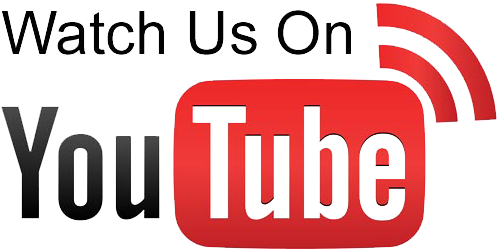
How to Maintain A Positive Company Culture:
Imagine your dream job for a moment. It’s the type of job that you don’t just drag yourself out of bed for, but jump up, fully clothed, ready to dive into the day.
That perfect job is exhilarating. It’s a breath of fresh air every day you go. You don’t even mind working late now and then because you believe in what the company stands for and want them to succeed.
In a word, a dream job is the personification of love.
But, why is that? What is it about the perfect job that makes our people want to do it? We can’t deny that it’s still work. And people only work to earn a living. Why else would we travel to and from, except to earn enough to pay our mortgage and put groceries on the table?
Especially during a pandemic like Covid-19?!?
Check out our captain insight!
That magical element that keeps people trudging through the mud like the rainbow permanently ends at the front door to the dealership is the culture we create. Company culture is the glue that binds your employees to you. It’s what keeps them coming every day.
Company culture isn’t a mission statement. We don’t just write our culture down on a piece of paper and say, voila, our company culture is done.
No, our company culture comes down to the living, breathing culture that we infuse into every interaction that every member of our teams has.
So, how do we maintain a positive culture? One that keeps people coming in to sell our cars or turn our wrenches?
You take the following steps.
Step 1: Define your culture
Looking in from the outside it’s almost impossible to define a company’s culture. According to Inc. Magazine, a company’s culture is the “shared values, attitudes, standards, and beliefs that characterize members of an organization and define its nature.” Your culture is rooted in the goals you’ve set and strategies you establish; it’s how you’ve defined your structure and how you approach concepts like labour and investor relations, customer-centricity, and how you interact within the community at large.
Your company culture may be by design or by accident.
But, at its heart, what does it stand for?
There is no time more important to establish that definition than during a pandemic.
The Organizational Culture Assessment Instrument (OCAI), developed by University of Michigan business professors Robert E. Quinn and Kim S. Cameron assigns company cultures into four primary groups:
-
Clan culture – Akin to a large family, there are strong bonds established through loyalty, tradition, and commonality.
-
Adhocracy Culture – Found in many tech firms that need to stay innovative, employees are encouraged to take chances by leaders that act more inspirational than authoritative.
-
Market Culture – Focused on achieving results, the goal is to make as much profit as possible and is lead by hard-nosed taskmasters.
-
Hierarchical Culture – This culture is focused on process and procedure. Leaders are seen as monitors pent upon keeping the status-quo and following rigid guidelines.
Step 2: Communicate your culture
It doesn’t matter whether you’re telling people within your organization or outside, what matters, is that you’re constantly defining the culture so your employees know how to act and behave.
During the Covid-19 Pandemic, Brandon Smith, sales manager at Steele Chevrolet, says they set up a Whatsapp chat group to remain connected to active and temporarily laid-off employees. No one was left behind, even when they didn’t know when the end would come. Steele Chevrolet has a culture that is committed to communicating with everyone.
Everold Reid, the founder of the Reid Method, explains further that, “you have to communicate daily and at scale.” Some staff need more communication and handholding and you need a culture that is dynamic enough to support them.
Step 3: Hire employees that share your culture
It’s easier to teach a new hire about your company culture if you already know they’ll be a good fit. For instance, someone looking for structure may not thrive in an adhocracy where your employees are encouraged to take risks.
Sean Kelly, the founder of Car Motivators, explains that there are no two management teams that share the same values and beliefs. The best thing for your team is to hire someone who fits into your culture and works well with your structure. Otherwise, you spend your time explaining yourself and trying to make them fit when they should have been already aligned with your dealership management team.
Having that agility will keep your teams moving positively forward during things like the Covid-19 pandemic will save time and energy.
Step 4: Evaluate your culture
No system can work in a vacuum. You need to constantly get feedback from your people. During the pandemic, Everold Reid continues, saying when you come back to work, you need to be empathetic and provide support to your staff. Every staff member is different and they have different levels of stress that you have to recognize.
It’s about people helping people and you can’t help anyone if you don’t help your staff. You need to have a culture that’s dynamic enough to take away some of the uncertainty.
Get out there and ask your staff the important questions. Find out how their family is coping. Leadership is by example, listening, caring, asking the right questions – not about work, but on a personal level.
Engage with your people and get the feedback to know whether your culture needs to evolve to support them better.
What does Success look like?
Company culture starts at the top. Dealer principals need to establish good positive energy and show their principles. A great way to get through is to establish a task force like John Kot, president of the Kot Auto Group, has done. Focused on the pandemic, the task force is more nimble and responsive to the needs of his staff.
There is no pretending that nothing happened when we get back to work. We have to recognize that people are scared and need precautions. Be mindful that you need to have constant communication so you can stay close to all your staff, whether they’re physically in the dealership or not.
There looms the possibility of a second wave of the virus and those dealerships that have a positive company culture are poised to weather the storm far better than those who haven’t defined or communicated it to their people.
Take the time now and review your culture so you and your people can successfully come out of this pandemic together.

